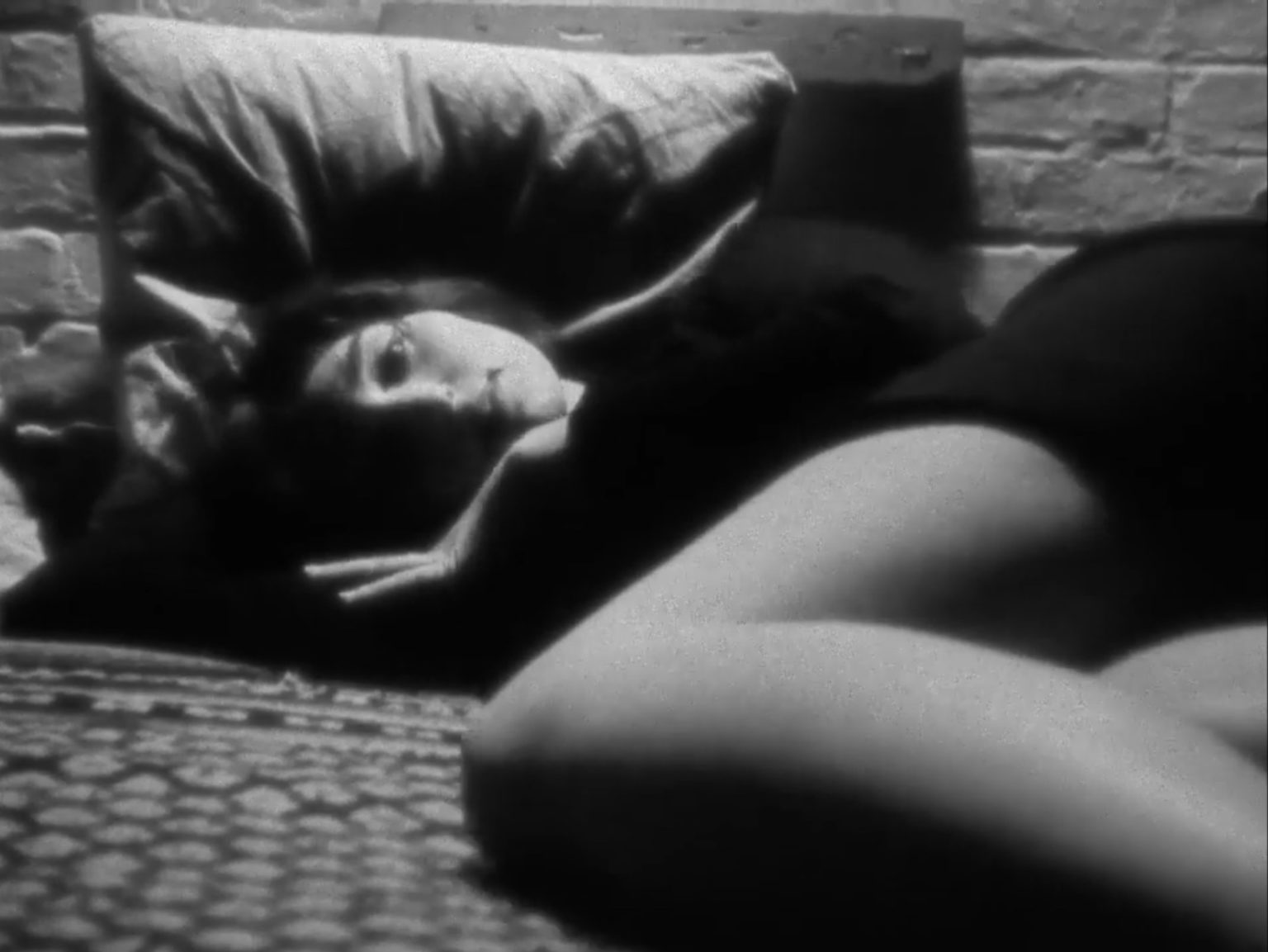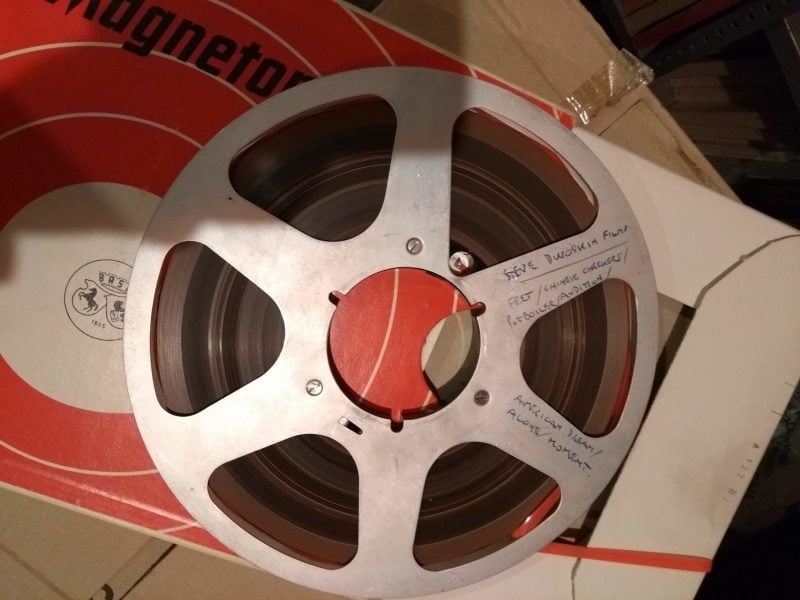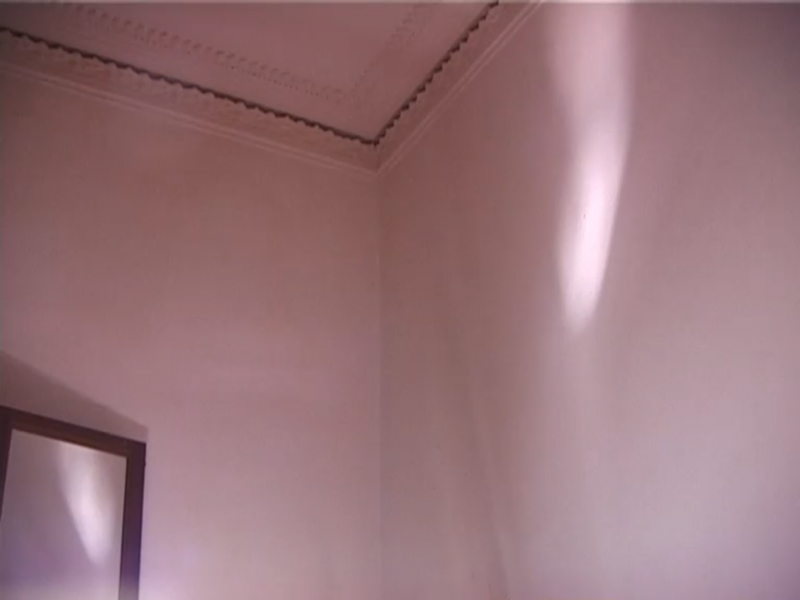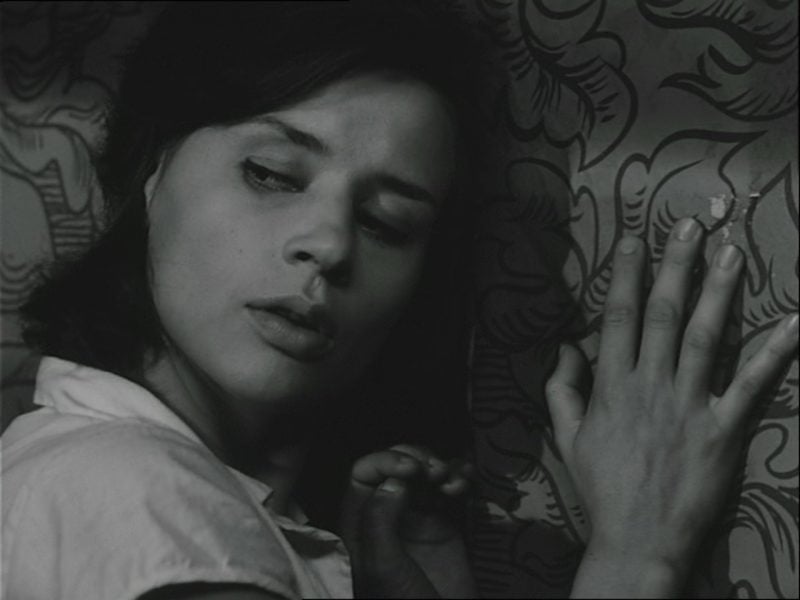Stephen Dwoskin’s first major films were made in the penumbra of the New York Film-Makers’ Co-op in 1964. For the inner circle – Jack Smith, Ken Jacobs, Ron Rice, Barbara Rubin – this was the moment of ‘Baudelairean cinema’, as Jonas Mekas called it, meaning ‘a world of flowers of evil, of illuminations, of torn and tortured flesh; a poetry which is at once beautiful and terrible, good and evil, delicate and dirty’. Dwoskin’s was also a Baudelairean cinema, but the Baudelaire who wrote of ‘a feeling of solitude since childhood. Despite one’s family – and above all in company – a feeling of an eternally solitary destiny.’
In three of the four films, all short, all black-and-white, all shot in a single interior space, all on 16mm, none with synchronized sound, the subject is a woman alone; in the fourth, it’s two women. In an early draft of his 1975 book Film Is…, Dwoskin wrote of shooting as a creative, spontaneous act, encompassing ‘the rapport with those to be filmed’, and becoming ‘an amazing ritual and the unfolding of a dream’. He needed and found in his performers an empathy, so that ‘he [sic] who is being filmed becomes much of the filmmaker’s embodiment’.
The films of this time and place, including Dwoskin’s, were not instances of ‘artists’ moving image’; they were not experiments, i.e. tentative; and they did not belong to the accredited avant-garde. They were called underground because they were at risk of confiscation by the authorities, and could not easily be shown in cinemas, but that doesn’t specify much about the films as films. The films of Dwoskin’s Co-op contemporaries were important to him, but probably more so was the influence of Ingmar Bergman, in whose work he saw the possibility of making a film of nothing but a woman’s face.
There is no easy way to date the films. Dwoskin was vague about when and where he showed them before he left New York for London in September 1964. The most likely scenario is that he showed them unfinished and essentially privately at the New York Co-op’s office on an upper floor of 414 Park Avenue South. It was in London that they were given titles and soundtracks, by Dwoskin’s neighbour Ron Geesin, and it was at the London Film-Makers’ Co-op, which Dwoskin helped found, that they were first shown in public, beginning in the autumn of 1966.
The definitive versions, with optical soundtracks, were shown at the Knokke experimental film festival at the turn of 1967–8, making his international name. With these four films, Dwoskin stripped down the elements of film language as it had been understood since the 1910s, based on exchanges of looks, and made them his own.
ALONE (1964/6)
A series of mostly static, often discontinuous shots of a girl alone in bed, ‘halfheartedly trying not to masturbate’ as Raymond Durgnat put it, Alone set the pattern for half-a-dozen of Stephen Dwoskin’s shorts. Conversely, it was itself one of a number of attempts using at least two other actors. The girl in the canonical version was Zelda Nelson, roommate of Beverly Grant, one of the stars of the New York underground.
‘Since there is no leaving her, and no insertions of other elements,’ wrote Dwoskin, ‘her involvement, in her thoughts and with her body, gradually becomes the viewer’s involvement since there is little else going on but her.’ The film’s sense of indefinite duration is greatly enhanced by Ron Geesin’s pulsing, minimalist soundtrack.
NAISSANT (1964/7)
Of all the stars of the New York underground, Stephen Dwoskin called Beverly Grant – also seen in films by Jack Smith and Ron Rice – ‘the most chameleon of the lot’. Whereas others ‘played themselves, she lived her parts to the fullest not only in the film but in her daily life‘. Here she plays a girl alone in bed – the same bed as in Alone – this time with something more troubling on her mind, though only the title hints at what it might be.
Naissant is notable for marking Gavin Bryars’s soundtrack debut. At the time it was recorded, in early 1967, the 23-year-old Bryars had recently left the experimental Joseph Holbrooke Trio, and this is one of few surviving recordings of him on double bass from that time.
SOLILOQUY (1964/7)
If Alone and Naissant are pre-eminently films of women’s faces, Soliloquy is made up of eyes, lips, hair, fingers, fabrics. The tactility that is present in Dwoskin’s other films of this period is to the fore here. The face was credited to Joan Adler, the voice to Leena Komppa. Joan Adler, a work colleague of Dwoskin’s in New York, had been his entrée to the downtown underground, and wrote a remarkable foreword evoking the scene for his 1975 book Film Is.
The narration was inspired by Molly Bloom’s soliloquy from James Joyce’s Ulysses – also the inspiration for Dwoskin’s first feature Times For. Leena Komppa, who wrote and performed it, was a photography student, and Dwoskin’s girlfriend at the time.
CHINESE CHECKERS (1964/6)
When Stephen Dwoskin submitted Chinese Checkers to the Fourth International Experimental Film Competition, held at Knokke-le-Zoute in Belgium at the end of 1967, he answered the question ‘In what sense is the film experimental?’ with the following: ‘using the film as composed visual time to develop and involve with the absorption and inner communication of two people’. The two people were performers he had worked with on other films, Beverly Grant from Naissant, and Joan Adler from Soliloquy.
Of all Dwoskin’s early films, Chinese Checkers is the most ‘Baudelairean’ in Jonas Mekas’s sense. It was written by Harry Smith, editor of The Smith, a literary little magazine that was launched in the year the film was shot, 1964.
The Dwoskin Project is based at the University of Reading and supported by the AHRC. Visit its website: https://research.reading.ac.uk/stephen-dwoskin/
Henry K. Miller is a postdoctoral research associate at the University of Reading, and editor of The Essential Raymond Durgnat.







